Wavely
Wavely App Design
Sourcing hobby materials sustainably.
Product Design
Branding
End to End
10 min read
TIMELINE
Feb-April 2024
DESIGN ROLE
Product, UX/UI, Research, Branding

Problem
Crafting materials can often be expensive, hard to find, and unsustainable.
Crafters want more materials for their projects, but they can be expensive and hard to find. It's difficult to get the products you need, without spending more money than desired, or pick the most sustainable option.
There is a big misconception that crafting supplies are all easily found at your local dollar store, which may be true to a degree, but hobbyists often want a more unique selection, a curation of materials other than those sold to them by mainstream stores.
For artists, the pursuit of new materials can be both costly and challenging, given their scarcity and the financial burden of acquiring them. It's particularly frustrating when only a small quantity of a specific material is needed, making the purchase of new supplies seem wasteful and unnecessarily expensive.
On the other hand, people regularly discard old items from their homes which often end up in landfills. Whether it’s from a spring cleaning, or an urge to declutter, more items end up in landfills than they should.
Based on a study from Boston University, “Once textiles are discarded, 66% of them are sent to landfills in the U.S. where they decompose — some quickly and others over hundreds of years”. Textiles are a big medium for some artists. Landfills are the artist’s land of opportunity for what could have been. The materials lucky enough to be saved from landfills have found sanctuary in thrift stores, only to be overlooked or inaccessible by many.
Clearly, there is a gap between these two groups who are seeking one another, yet do not know where or how to find each other. To remedy this gap, Wavely was created.
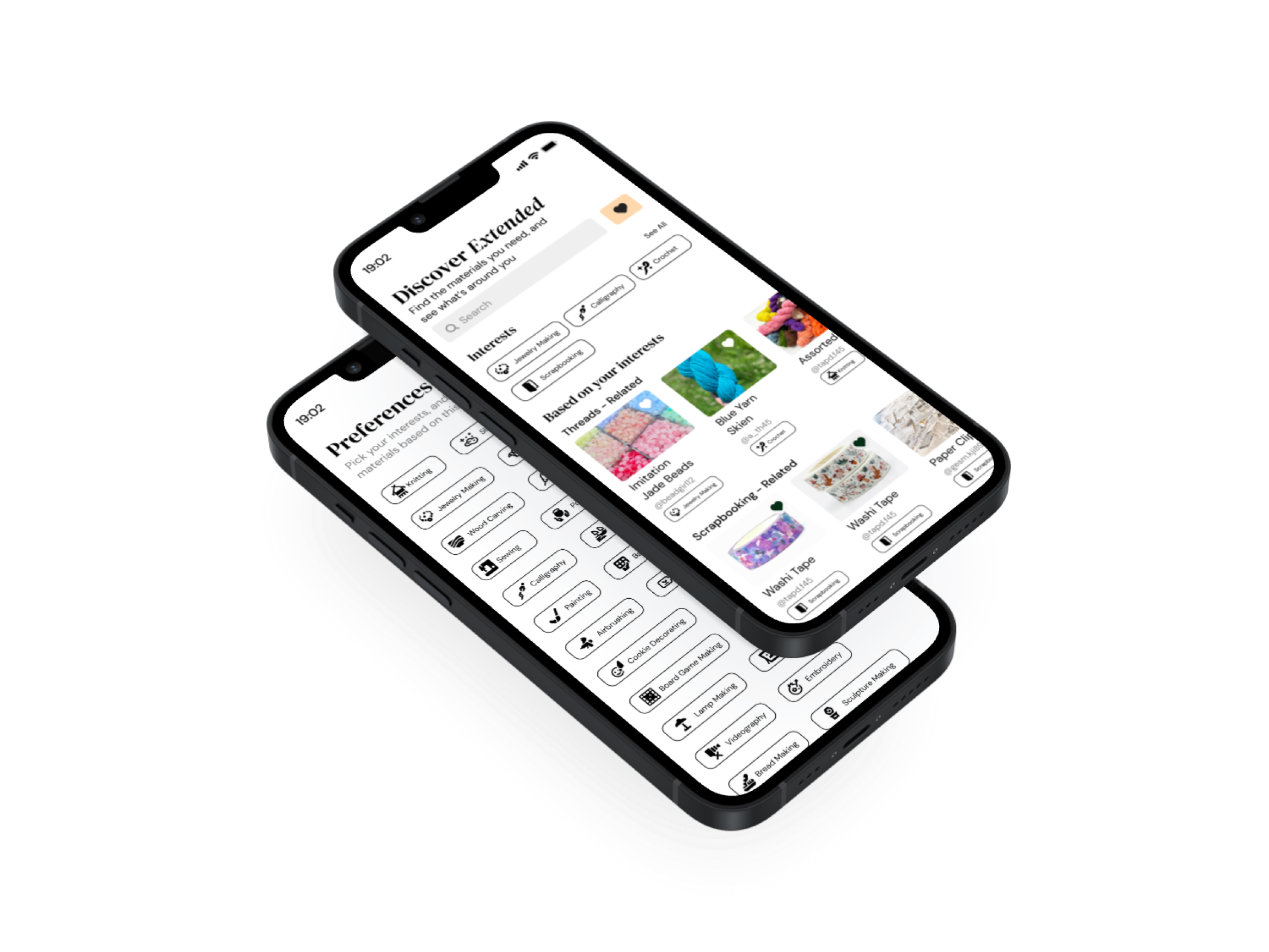
Solution
Wavely: Barter for your hobby materials instead of spending.
Wavely is an innovative app designed to revolutionize the way crafters source their materials. By facilitating the exchange of goods, our platform enables users to find exactly what they need for their projects by trading items with others. This approach not only fosters a sense of community among crafters but also promotes sustainable practices by reducing waste. With Wavely, the age-old tradition of bartering is modernized, providing crafters everywhere with a resourceful way to pursue their passions more sustainably and affordably.
Research
PART 1
Identifying Opportunity
Method: Survey
From personal experience with crafting, I knew this problem existed, but I conducted a survey to further confirm my suspicions.
To explore whether other crafters shared my concerns about sampling different crafts or acquiring small, specific pieces of materials, I devised a set of questions aimed at understanding their experiences with sourcing materials.
I surveyed 25 people, and in the mix was anyone who enjoyed crafting as a hobby, to people who run crafting businesses. All participants had some experience in the field.
How much on average do you spend on craft supplies in a year?
Have you ever struggled to find just a small amount of a particular crafting material for your projects?
How do you deal with having too much of one material?
Here, the focus shifts to understanding how crafters currently handle the issue of excess materials or the need for small quantities of specific items. The aim is to learn about their approaches and identify any existing solutions they use, revealing potential gaps in the market.
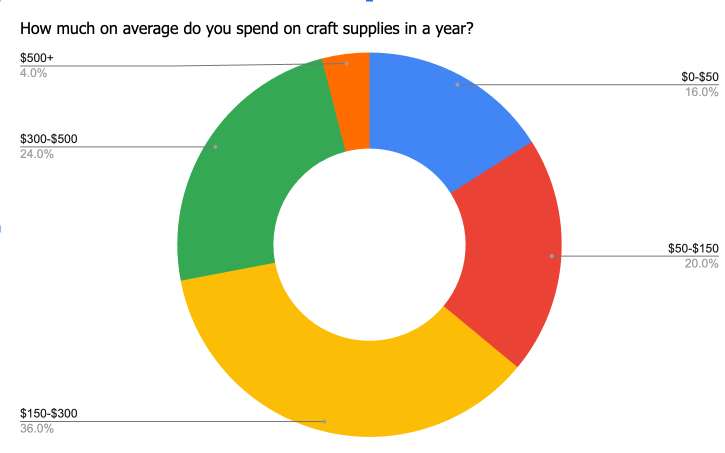
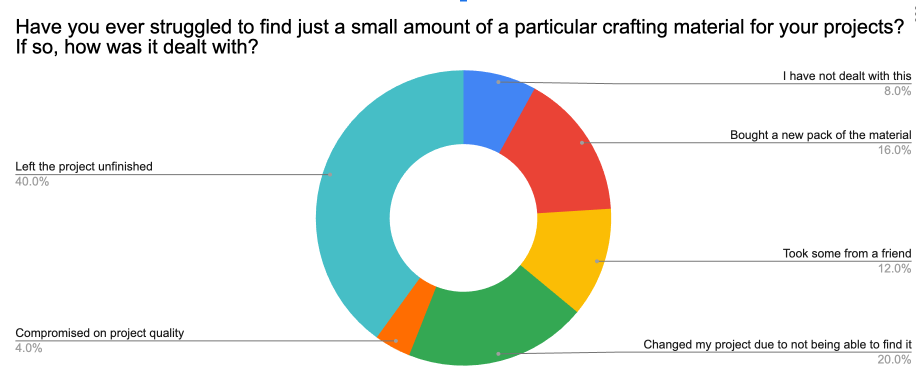
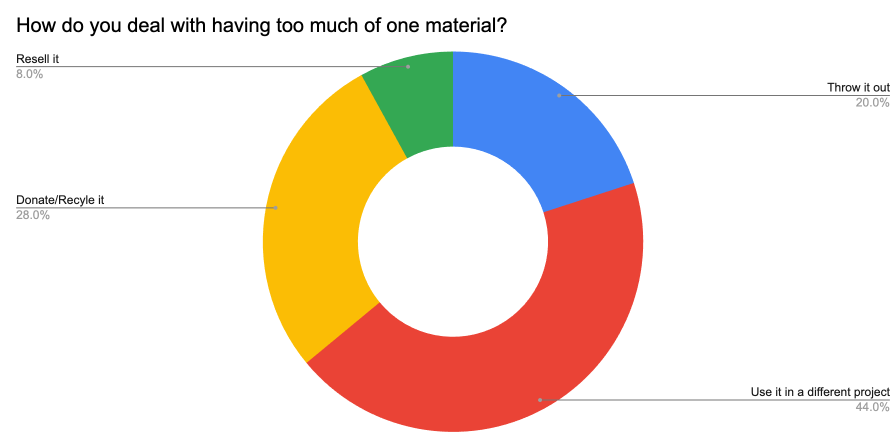
Findings
The crafting community navigates a paradoxical challenge, balancing the boundless potential of creativity with the practical limitations of material cost, accessibility, and sustainability.
36% of participants spend between $150 - $300 on craft supplies, which is a big number that may be reduced if they used alternative methods to obtain supplies. The profiles of the people who inputted this range were not those with businesses, but rather hobbyists.
The struggle to find a specific amount of a specific product exists, and leads to hobbyists having to leave their projects unfinished. 16% had a buy a new pack of whatever the material was, which is high considering the pool of participants was only 25 people.
The challenges faced by the crafting community are multifaceted, stemming from the intrinsic nature of crafting itself—a realm where creativity knows no bounds, but practical constraints often hinder the realization of this creativity. At the heart of these challenges lies a paradox: the quest for diverse and quality materials versus the practical limitations of cost, accessibility, and sustainability.
PART 2
Understanding the Problem
Methods: Competitor Analysis, User Persona
Now that I’ve established that the problem really exists, I did more research into the way people are currently sourcing products.
Competitor Analysis
Direct Competitors
Facebook Groups
Strengths: Widely used, strong community features, easy for users to join and start groups, diverse audience.
Weaknesses: Not specifically designed for crafting material exchange, can be difficult to search for specific items or events, issues with moderation and privacy.
Opportunities: A specialized platform can offer a more tailored experience with features specifically designed for crafters, such as material tracking, project sharing, and localized event notifications.
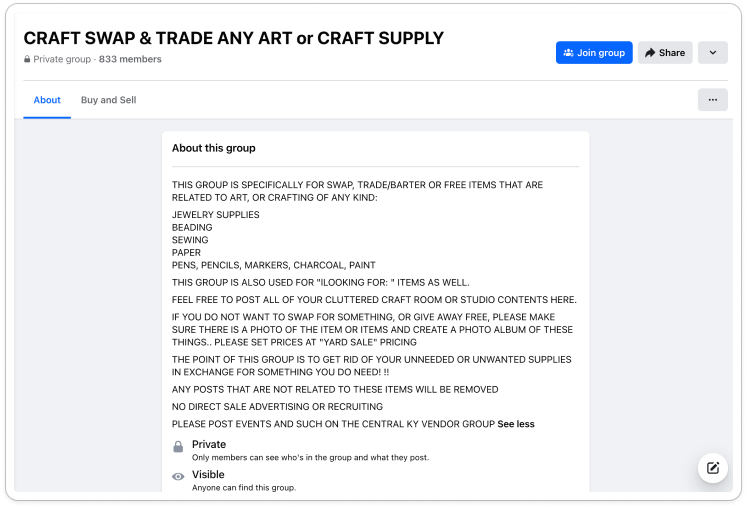
Indirect Competitors
Etsy
Strengths: Well-established marketplace for handmade goods and crafting supplies, strong brand recognition, wide variety of products.
Weaknesses: Primarily focused on selling rather than trading or sharing, fees for sellers, can be overwhelming for buyers looking for specific materials.
Opportunities: An emphasis on material exchange and local community building could attract users looking for a more collaborative and cost-effective solution.
Nextdoor
Strengths: Community-focused, encourages local interactions and exchanges, including free items or local services.
Weaknesses: Not specifically tailored for crafters, limited by geographical area, broader focus on neighborhood news and concerns.
Opportunities: A crafting-specific platform can provide more relevant connections and resources for crafters looking to trade materials and collaborate locally.
Ravelry
Strengths: Niche community for knitters and crocheters, includes patterns, forums, and a marketplace.
Weaknesses: Limited to knitting and crocheting, does not specifically facilitate material trading or local event discovery.
Opportunities: Expanding the concept to include a wider range of crafting activities and adding features for material exchange and event discovery could appeal to a broader audience.
Emerging Competitors
Local crafting apps and websites
Smaller, niche platforms that might exist in specific regions or for specific crafting communities. They might offer localized event information or forums for material exchange but lack the scale or feature set of a more comprehensive platform.
Sustainable living and zero-waste apps
Apps focused on sustainability might offer features for exchanging goods, including crafting materials, but lack a focus on the crafting community's specific needs and interests.
Market Opportunities
Niche Focus
By catering specifically to crafters, the platform can offer features and a community that are highly relevant to its users' needs, setting it apart from more general platforms.
Sustainability
There is growing interest in sustainability and reducing waste, making a platform that promotes the reuse and sharing of materials particularly appealing.
Local Engagement
Enhancing local community engagement through event discovery and local trades can provide a unique value proposition not fully addressed by current competitors.
The landscape for a crafting material exchange and community platform shows a mixture of broad and niche competitors, each with their own strengths and limitations. The opportunity lies in creating a platform that combines the best features of these services—specifically tailored for the crafting community, focusing on sustainability and local engagement, and offering functionalities beyond what generalist platforms provide. By addressing the specific needs and pain points of crafters, such as the desire for a diverse range of materials without the waste and expense, the platform can carve out a unique space in the market.
User Persona
I found it helpful to build a persona because it gave me a clearer visualization of who I was designing for. So, I created Ann - highlighted by the following points.
A Quest for Sustainable Crafting
Ann's journey is guided by a deep commitment to sustainability. She's on a mission to tread lightly on the earth, seeking ways to source materials that are not only unique and high-quality but also sustainable and ethically produced. Her crafting isn't just a hobby; it's a statement of her values, an expression of a lifestyle that cherishes the planet.
Community and Connection
Beyond materials, Ann craves the warmth of a community. She dreams of a platform where she can weave connections with fellow craft enthusiasts, a place to exchange not just materials but ideas, inspiration, and friendship. She envisions a collaborative space where crafters unite, sharing resources and talents to bring larger projects to life and to participate in local events and workshops that fuel her passion and hone her skills.
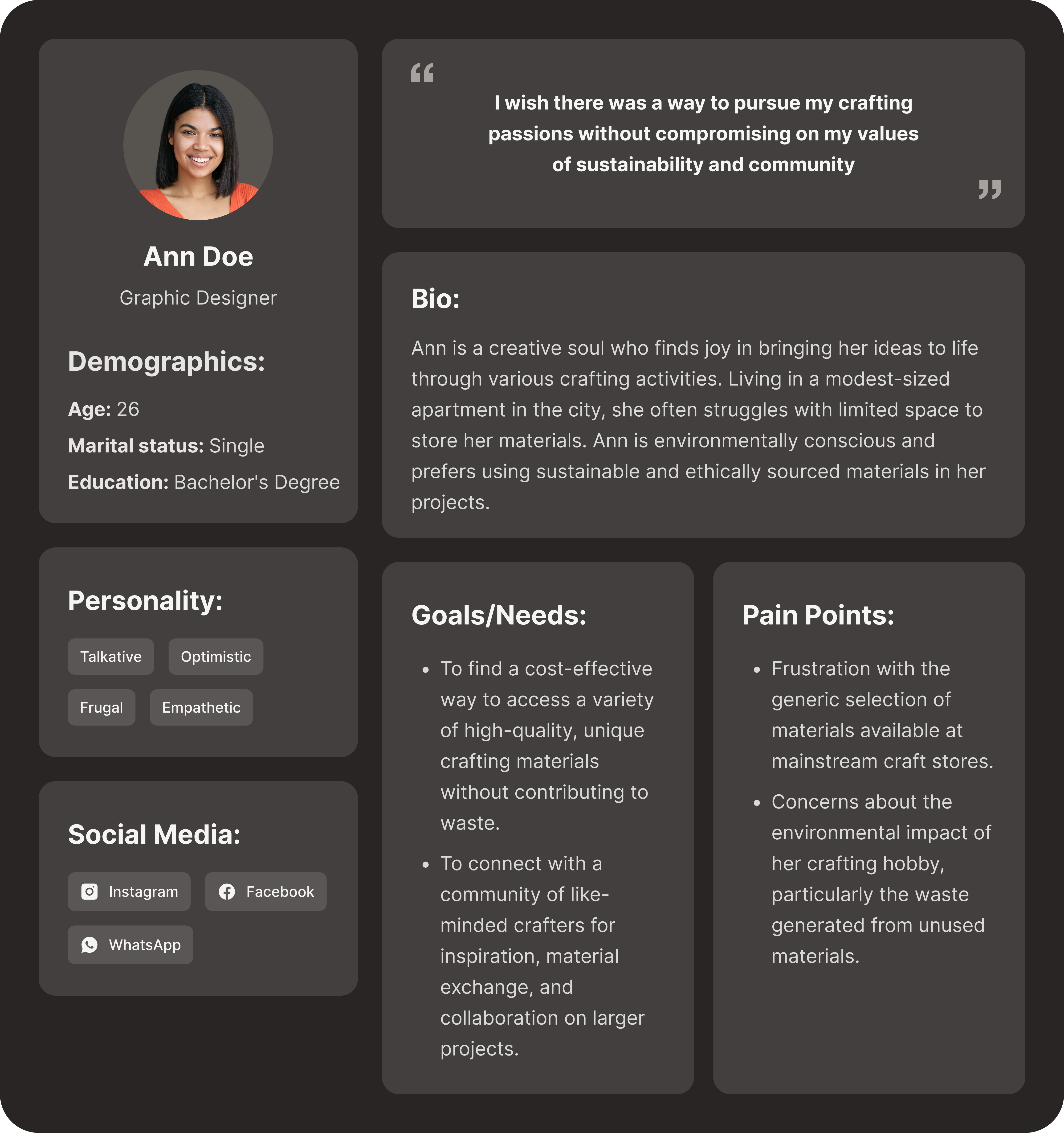
Design
Rationale behind the designs

I created a flowchart to plan out the vision for this app. This was based on all the research that was done, and this flowchart is a very basic outline of the features.
Onboarding
I stuck to a 3 screen process for onboarding. The onboarding process of any app can make or break whether users will actually use the app or not. Users have limited time which they are ready to devote to learning how the product works before starting to actually interact with it, and I wanted to keep the onboarding short and simple. It should concisely let users know who should use this app, how it will be helpful, and how to use it. I made a short 3 screen onboarding, to support higher engagement, and a lower time to value rate.
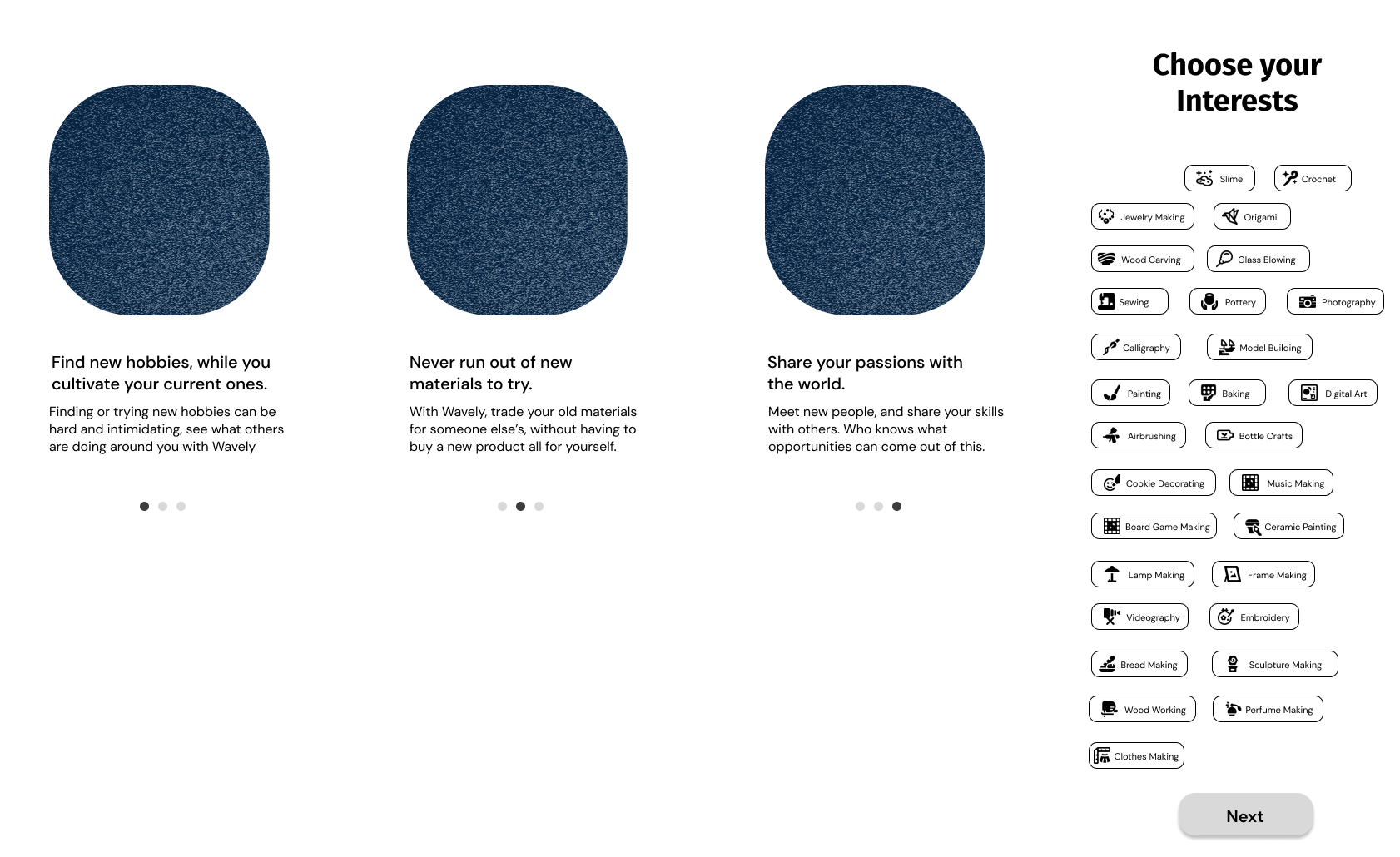
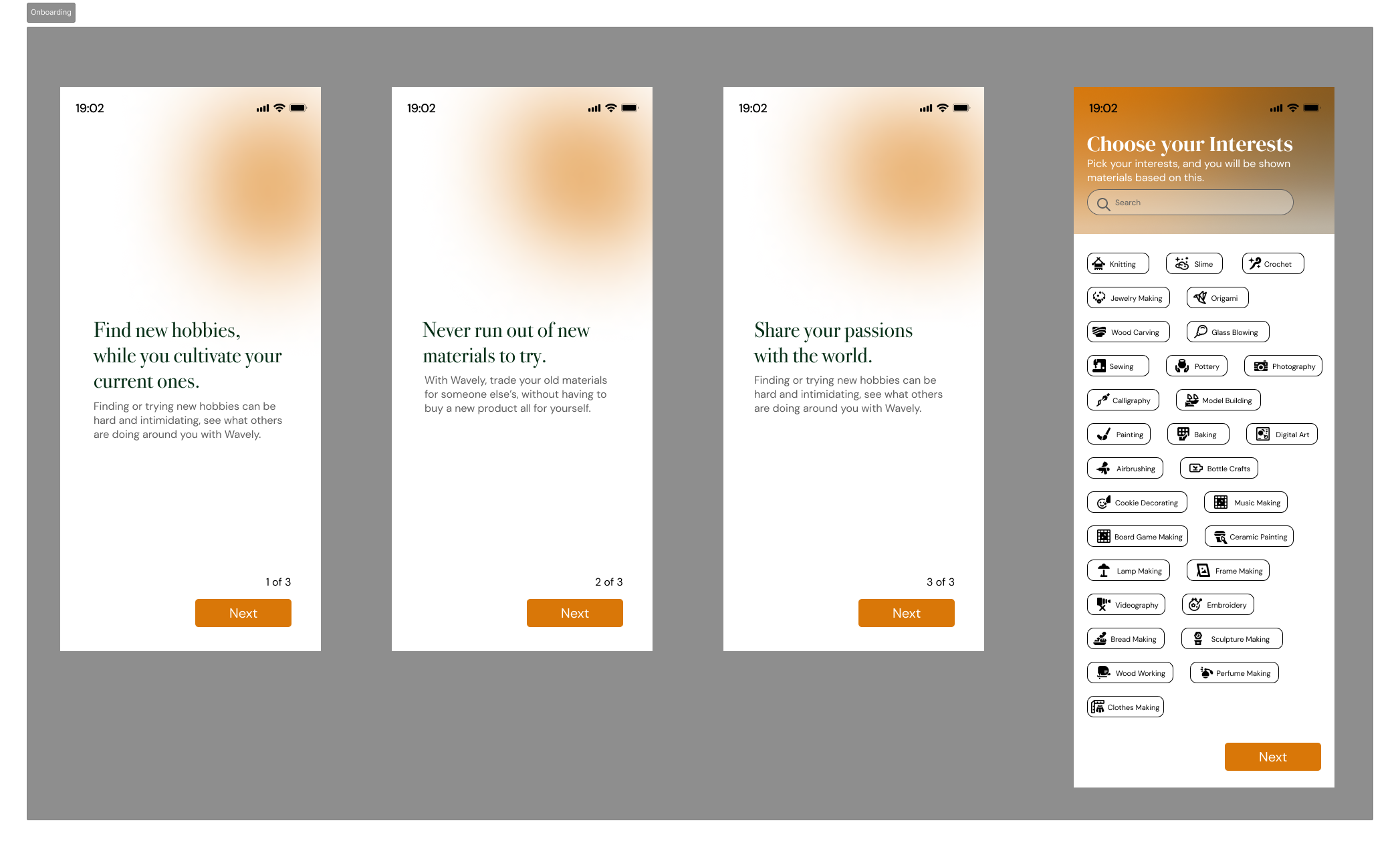
The before and the after of onboarding
This project was a really iterative process. I started with barebone wireframes of what the main screen of this app may look like

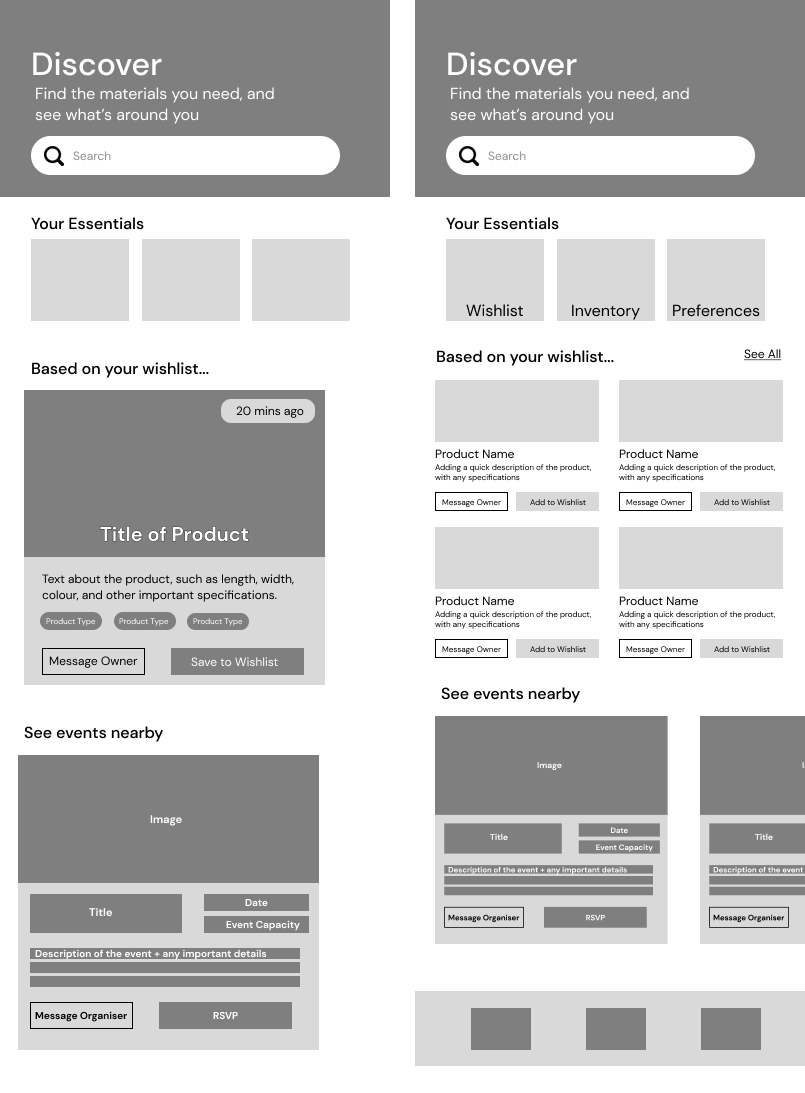
I also did an exploration on what I wanted the product and event cards to look like.
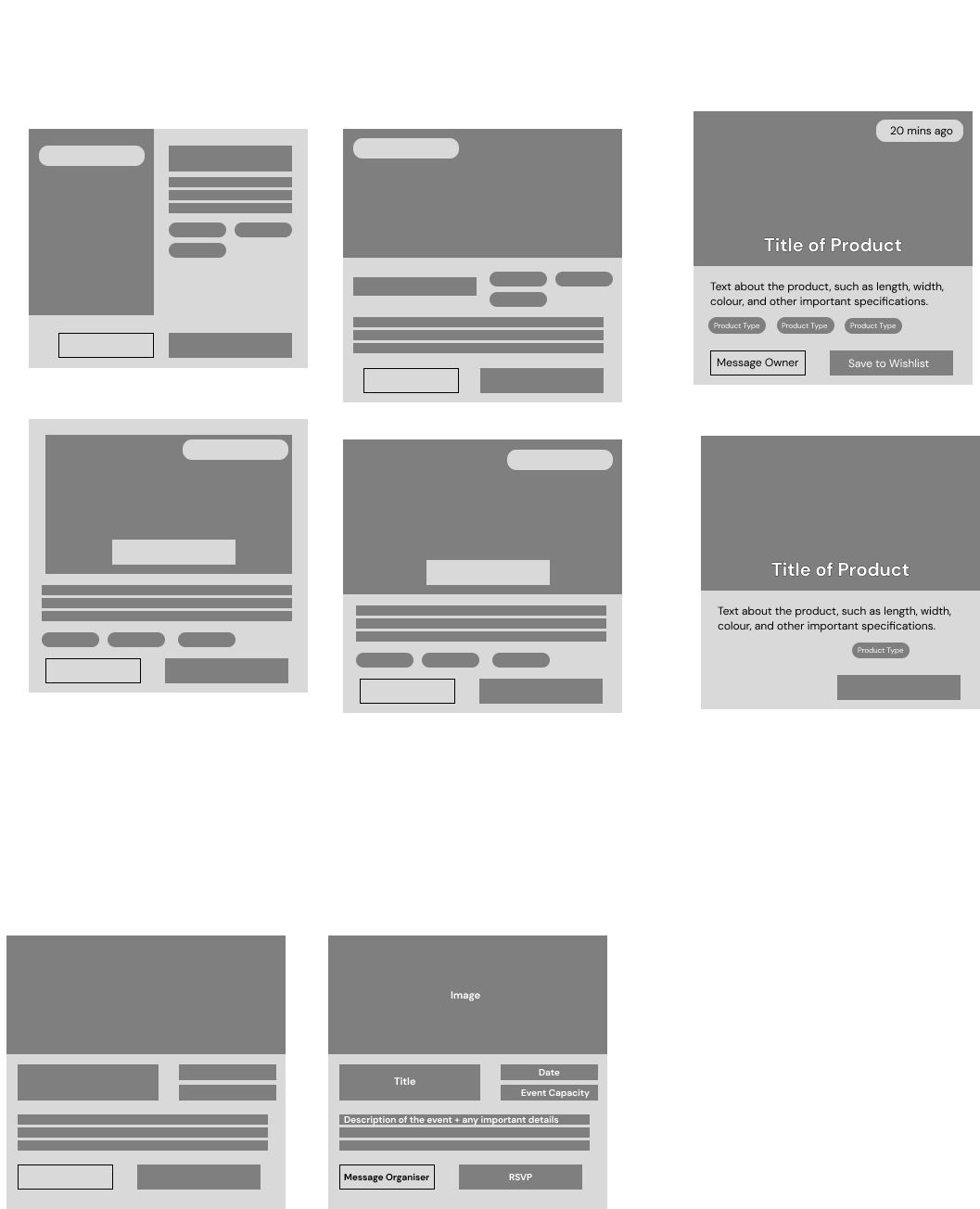
Then again, made more low-fidelity screens for other sections of the app.
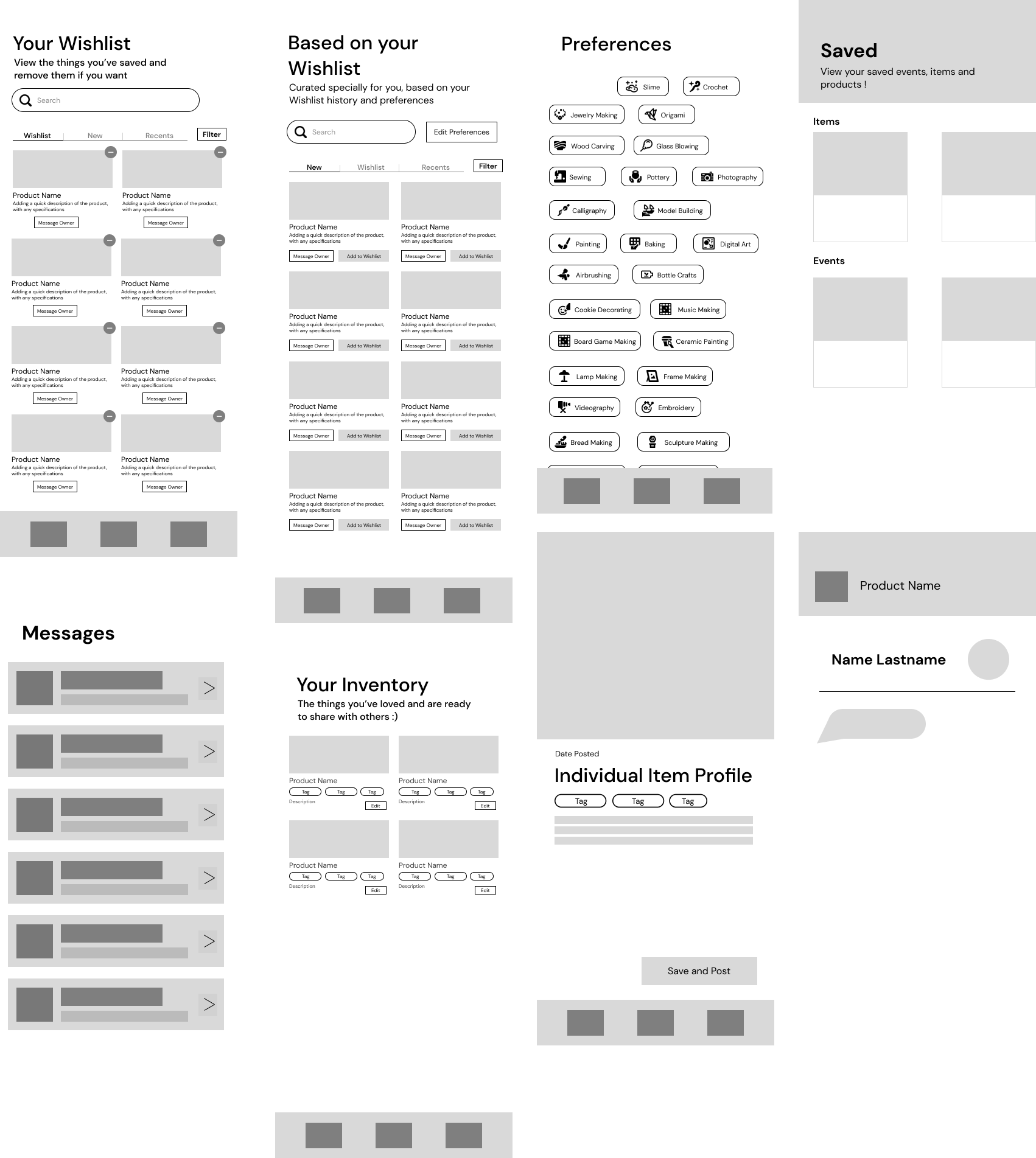
At this stage, I wanted to make sure my designs were intuitive for my prospective users. I conducted usability testing through the pen and paper method, where I asked 2 people to go through a printed version of my low fidelity screens, and gauged their experiences with the app's anticipated interactions.
Findings
Based on the usability testing, the app was simple enough to navigate. There were a couple points that came up on improving the UI aspect of the app.
Product Cards have too much information
Too much information at once can be distracting for the user, and lead to them not using the app to the fullest. I realized I needed to continue exploring options for the product cards to pick something that gets the point across.
Essentials buttons at the top can be smaller
The users did not see a need for these buttons, especially if there are similar buttons in the bottom navigation. I decided I can try redesigning them, or take them out of the app.
Following these findings, I continued to make a first iteration of designs for the app.

I was still not satisfied with these designs. I made a second iteration instead.

Finally, I made my final iteration of the app design.
